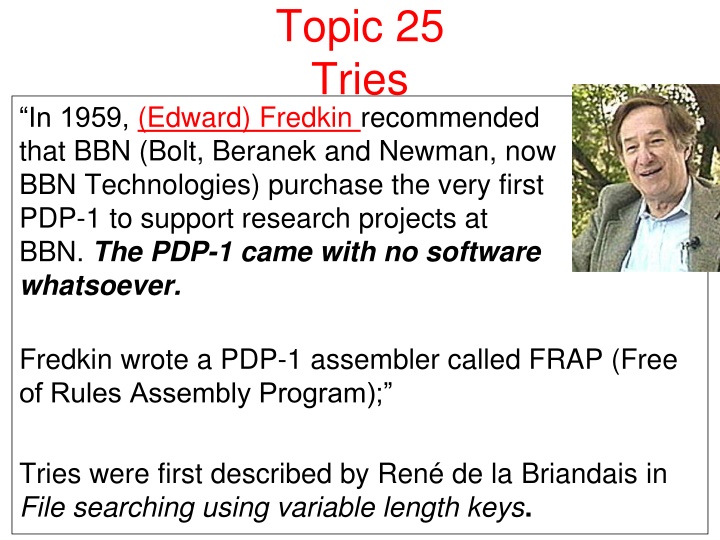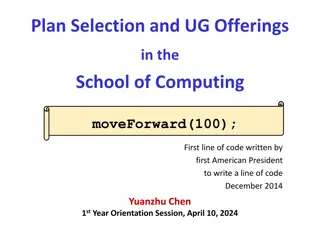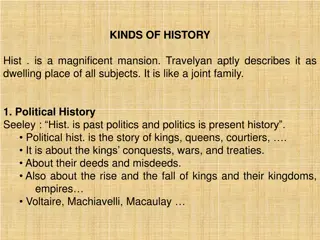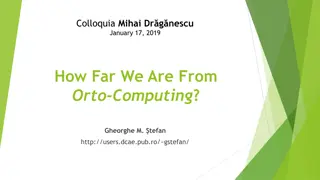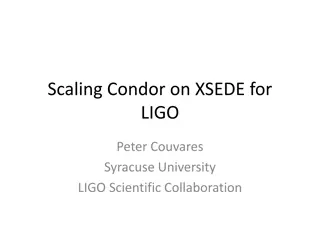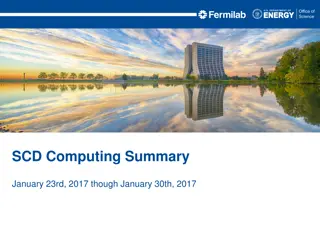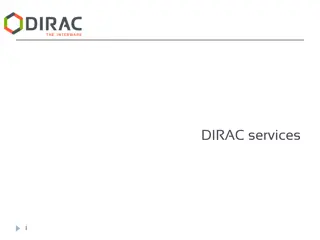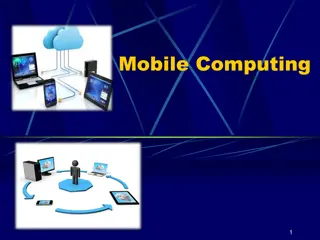The History and Application of Tries in Computing
Learn about the origin of tries with Edward Fredkin's pioneering work, the practical uses in modern technology like predictive text and autocomplete features, and how tries efficiently search data structures based on prefixes. Discover the significance of tries in computer science and explore their implementation in various applications.
Download Presentation

Please find below an Image/Link to download the presentation.
The content on the website is provided AS IS for your information and personal use only. It may not be sold, licensed, or shared on other websites without obtaining consent from the author.If you encounter any issues during the download, it is possible that the publisher has removed the file from their server.
You are allowed to download the files provided on this website for personal or commercial use, subject to the condition that they are used lawfully. All files are the property of their respective owners.
The content on the website is provided AS IS for your information and personal use only. It may not be sold, licensed, or shared on other websites without obtaining consent from the author.
E N D
Presentation Transcript
Topic 25 Tries In 1959, (Edward) Fredkin recommended that BBN (Bolt, Beranek and Newman, now BBN Technologies) purchase the very first PDP-1 to support research projects at BBN. The PDP-1 came with no software whatsoever. Fredkin wrote a PDP-1 assembler called FRAP (Free of Rules Assembly Program); Tries were first described by Ren de la Briandais in File searching using variable length keys.
Clicker 1 How would you pronounce Trie A. tree B. tri ee C. try D. tiara E. something else CS314 Tries 2
Tries aka Prefix Trees Pronunciation: From retrieval Name coined by Computer Scientist Edward Fredkin Retrieval so tree but that is very confusing so most people pronounce it try CS314 Tries 3
Predictive Text and AutoComplete Search engines and texting applications guess what you want after typing only a few characters CS314 Tries 4
AutoComplete So do other programs such as IDEs CS314 Tries 5
Searching a Dictionary How? Could search a set for all values that start with the given prefix. Naively O(N) (search the whole data structure). Could improve if possible to do a binary search for prefix and then localize search to that location. CS314 Tries 6
Tries A general tree (more than 2 children possible) Root node (or possibly a list of root nodes) Nodes can have many children not a binary tree In simplest form each node stores a character and a data structure (list?) to refer to its children "Stores" all the words or phrases in a dictionary. How? CS314 Tries 7
Ren de la Briandais Original Paper Trie from Ren de la Briandais original paper on Tries. CS314 Tries 8
???? CS314 Tries 9
???? Picture of a Dinosaur CS314 Tries 10
Fall 2022 - Ryan P. Created with Procreate: https://procreate.art/ CS314 Tries 11
Can CS314 Tries 12
Candy CS314 Tries 13
Fox CS314 Tries 14
Clicker 2 Is fast in the dictionary represented by this Trie? A. No B. Yes C. It depends CS314 Tries 15
Clicker 3 Is fist in the dictionary represented by this Trie? A. No B. Yes C. It depends CS314 Tries 16
Tries Another example of a Trie Each node stores: A char A boolean indicating if the string ending at that node is a word A list of children CS314 Tries 17
Predictive Text and AutoComplete As characters are entered we descend the Trie and from the current node we can descend to terminators and leaves to see all possible words based on current prefix b, e, e -> bee, been, bees CS314 Tries 18
Tries Stores words and phrases. other values possible, but typically Strings The whole word or phrase is not actually stored in a single node. rather the path in the tree represents the word.
Implementing a Trie public class Trie { private TNode root; private int size; // number of words private int numNodes; public Trie() { root = new TNode(); numNodes = 1; CS314 Tries 20
TNode Class private static class TNode { private boolean word; private char ch; private LinkedList<TNode> children; Basic implementation uses a LinkedList of TNode objects for children Other options? ArrayList? Something more exotic? CS314 Tries 21
Basic Operations Adding a word to the Trie Getting all words with given prefix Demo in IDE CS314 Tries 22
Compressed Tries Some words, especially long ones, lead to a chain of nodes with single child, followed by single child: s b e t e i u o l a y o l d p c l r y l k
Compressed Trie Reduce number of nodes, by having nodes store Strings A chain of single child followed by single child (followed by single child ) is compressed to a single node with that String Does not have to be a chain that terminates in a leaf node Can be an internal chain of nodes CS314 Tries 24
Original, Uncompressed s b e t e i u o l a y s l d p c l r y l k CS314 Tries 25
Compressed Version s b ell to e id u ck p sy ar y ll 8 fewer nodes compared to uncompressed version s t o c - k CS314 Tries 26
Data Structures Data structures we have studied arrays, array based lists, linked lists, maps, sets, stacks, queues, trees, binary search trees, graphs, hash tables, red-black trees, priority queues, heaps, tries Most program languages have some built in data structures, native or library Must be familiar with performance of data structures best learned by implementing them yourself CS314 Heaps 27
Data Structures We have not covered every data structure Heaps http://en.wikipedia.org/wiki/List_of_data_structures
Data Structures deque, b-trees, quad-trees, binary space partition trees, skip list, sparse list, sparse matrix, union-find data structure, Bloom filters, AVL trees, 2-3-4 trees, and more! Must be able to learn new and apply new data structures CS314 Heaps 29
